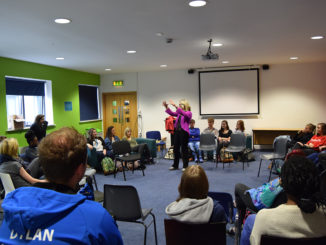
[dropcap]A[/dropcap]s students enter university, it will not be uncommon for them to have many lecturers who are women.
Across all Higher Education Institutes (HEI) in Ireland women hold 51 per cent of lecturer positions. However, what many students may be unaware of is that just 24 per cent of women held professorship positions across all Irish universities and institutions in 2017.
In order to combat this issue, a ‘Gender Action Plan’ for Higher Level Education institutes in Ireland has been launched by the government.
Taoiseach Leo Varadkar and Minister for Higher Education, Mary Mitchell O’Connor, launched the ‘Gender Action Plan 2018-2020: Accelerating Gender Equality in Irish HEI on November 12th.
The initiative aims to tackle gender disparity in education and hopes to transform the Higher Education sector’s gender equality performance.
“We know that diversity and broad representation leads to better decision-making and a more productive environment and workforce,” said Varadkar.
“The Government is committed to equality between men and women; we have published gender pay gap legislation, we’re bringing in paid parental leave for both parents, we’re making childcare more affordable and raising standards and we’re doing more to promote women to the judiciary and to State boards,” he added.
Síona Cahill, president of the Union of Students in Ireland, worries that not only are female academics potentially missing out on professorships, but female students looking to go into academia may feel uninspired to do so.
“We have a serious serious problem with the progression of female academics across our institutions at the moment. In terms of how it affects students, it’s bad because obviously not only are students seeing a lack of representation of incredibly brilliant female academics throughout the system but also that any student who’s considering a career in academia probably thinks twice if they’re a woman about whether they’ll enter the field at all,” she explained.
According to Taskforce, a data analysis service which looks at present trends, if institutions carry on with current practice, it may take over 20 years to achieve a 40 per cent gender balance at professorial level.
Mary Mitchell O’Connor stated in the Dáil that “female role models in positions of authority will encourage and inspire female students to aspire to holding the top jobs in their future workplace”.
“We have already shown our commitment to issues of equality and diversity with the same-sex marriage referendum and indeed issues which impact upon women including this year’s referendum to remove the 8th amendment. I know that the targets contained within this report will affect real change. Gender inequality has no place in the higher education system,” Mitchell O’Connor added.
The action plan it states that “HEIs will set ambitious targets for the proportion of academic and professional, management and support staff of each gender to be in senior positions in one, three and five years’ time”.
International countries also show an extremely low percentage of women in senior positions in HEIs. In 2016 France saw 24 per cent of women in these positions, Switzerland 21 per cent and Germany 23 per cent. According to the ‘Gender Action Plan’ report launched by Mitchell O’Connor, these countries have already made considerable efforts to improve their gender equality in HEI.
With this action plan, hopefully, when a student enters university in six-years’ time it will be commonplace for them to not only have female lecturers but female professors too.
“I want 40 per cent of professors within our institutions to be female by 2024,” added Mitchell O’Connor.
Ciara O’Loughlin
Image Credit:



